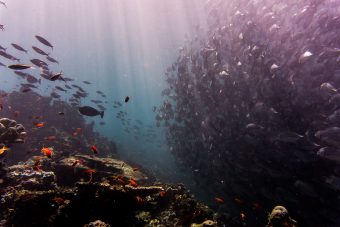
At the beginning of May 2021, the preparation started for the 15th gathering of the states that signed the UN Convention on Biological Diversity CBD. The main topic was the development of a ten-year strategy for biological diversity protection after 2020. Ocean protection is considered to be one of the most vital points of this strategy. Experts worldwide call to adopt the goal by which at least 30 percent of the ocean surface would be protected until 2030 (30 by 30 initiative). If the law protected certain areas, it would prevent excessive exploitation of oceans’ resources, especially many endangered marine species. In addition, it would lessen the pressure of pollution and enable recovery of the eco-system, which sustains life on the planet.
The health of the oceans and seas is what the living conditions depend on, namely the survival of the species, including humans. Therefore, ocean and sea protection mustn’t become an issue that only coastal countries deal with. Still, this topic should be of global public interest. As a result, more and more countries are involved in working on improving marine world status.
The International Union for Conservation of Nature (IUCN), through its Regional Office for East Europe and Central Asia and the Pew Charitable Trust, had precisely that in mind. So they organized in April a two-day regional workshop about 30 percent ocean protection by 2030. The workshop participants included the representatives of many countries from the region who don’t have access to the sea. Although often left out of the marine initiatives and programs, these countries have an equal interest in preserving ocean health. The ecosystem services that the ocean provides are critical. They include climate regulation, carbon removal from the atmosphere, food production, etc. The workshop offered vital idea exchange to the government representatives from Albania, Armenia, Azerbaijan, Bosnia and Herzegovina, Georgia, Kazakhstan, Kyrgyzstan, Montenegro, North Macedonia, the Russian Federation, Tajikistan, Turkmenistan, Ukraine, and Serbia.
In focus:
One of the most important questions discussed was the need to identify protected areas type, including protective measures prescribed for different classes. According to the IUCN definition and criteria for protected areas, every marine protected area as common good would have to be “clearly outlined geographical space which needs protection,and that is managed with a view to long-term environmental protection, eco-system services, and cultural values.”
Prepared by: Milica Mišković
Read the story in the new issue of the Energy portal Magazine WATER RESOURCES.



